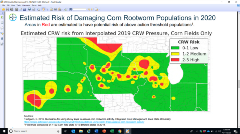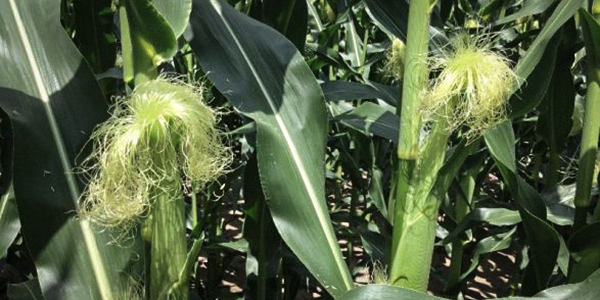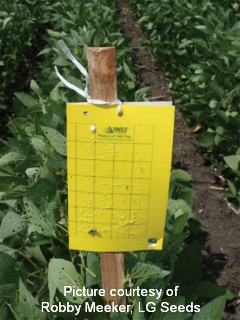AGRONOMICSUPPORT
YOU CAN TAKETO THE FIELD
Corn Rootworm - How to Monitor It
Corn Rootworm beetle trapping season is here and it’s important to monitor localized rootworm pressure for this year, as well as heading into 2021. Setting Sticky Traps is the best way to gauge rootworm pressure for your fields. In this bulletin, we are going to discuss how to estimate rootworm pressure in your fields.
 Corn rootworm hotspot maps are distributed following the growing season as seen by the map attached from the 2019 trapping season from Bayer. These hotspot maps are taken from sticky trap counts for individual fields. In order to have the best data for your operation having traps in or around your fields are best to estimate specific rootworm pressure.
Corn rootworm hotspot maps are distributed following the growing season as seen by the map attached from the 2019 trapping season from Bayer. These hotspot maps are taken from sticky trap counts for individual fields. In order to have the best data for your operation having traps in or around your fields are best to estimate specific rootworm pressure.
Corn rootworm beetles hatch (according to Iowa State University) when GDU accumulation reaches 686-767 GDU’s for 50% of rootworm beetle larvae. In central Illinois we have accumulated 780 GDU’s for the growing season. I would estimate that we are nearing enough GDU accumulation to have hatched rootworm larvae in the majority of the corn belt. Another sign that rootworm hatch has begun is to look for lightning bugs. Here in central Illinois lightning bugs have been around for a few weeks.
Placing Traps
Corn rootworm beetle traps can be placed in both corn and soybean fields. It is best to place traps 200 feet into the fields and at a minimum of 120 feet. In soybean fields a post will be needed to attach the trap to. For corn it is best to place traps just above the silks/developing ears. Common practice for trap setting, is to have one or four traps in each field.
Reach out to your local TTA for detailed instructions for trap hanging practices.
The best time to set traps to catch adult, egg laying beetles, would typically occur in July for the Corn Belt when corn begins the pollination process. Soybean traps are placed in the July time frame as well.
In the next few weeks, LG Seeds Technical Team Agronomists will be placing their orders for sticky traps for their team. Be sure to reach out to secure your traps for your fields. In doing so, the right trait selection can be made for your operation.
Download a copy of this technical bulletin here: Corn Rootworm - How to Monitor It
Source and Additional Information:







Technical Team Agronomist